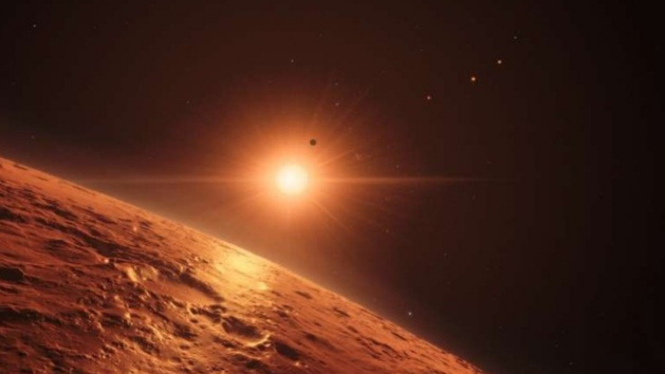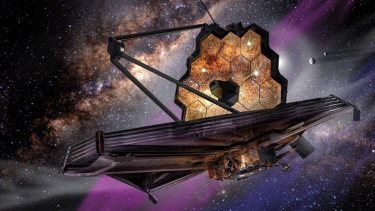- U-Report
Jakarta – The rocky worlds of the Trappist royal system have captivated scientists. Recently, these Earth-sized planets beyond our solar system, called exoplanets, have remained largely mysterious.
But researchers suspect some could host water, and maybe even conditions suitable for extraterrestrial life. With the power of the James Webb Space Telescope (JWST), the most advanced space observatory ever built. Astronomers can analyze these worlds in unprecendented detail.
So far, Webb has viewed the two closest planets to their star, Trappist-1. Scientists has trained the Webb telescope on Trappist-1, the second of the seven-known Trappist planets, and one that orbits just some 1.5 million miles from its small "red dwarf" or also called an "M dwarf) star.
Teleskop James Webb.
- Medium
Astronomers found this hot planet likely doesn't harbor a thick atmosphere (perhaps similar to Venus), as astronomers once speculated, and instead has little to no water and isn't a great candidate for habitability. There are more Trappist planets, however, for Webb to deeply observe.
"Trappist-1 c is interesting because it’s basically a Venus twin: It’s about the same size as Venus and receives a similar amount of radiation from its host star as Venus gets from the sun," Laura Kreidberg, an exoplanet researcher at the Max Planck Institute for Astronomy and a study coauthor, said in a statement.
"We thought it could have a thick carbon dioxide atmosphere like Venus."
A information, the planet is hot, at some 225 degrees Fahrenheit on its dayside, but not nearly as warm as scorching Venus, which is as hot as a pizza oven.
The Webb telescope is well-equipped to peer into distant solar systems. Its mirror is over 21 feet across, over two and a half times larger than the Hubble Space Telescope's, allowing it to capture extremely faint light from exoplanets in our Milky Way galaxy.
In the case of Trappist-1 c, located some 40 light-years away from Earth, astronomers used a clever strategy to sleuth what is, or isn't, in the atmosphere.
They watched the world pass behind its star four times, allowing researchers to compare the total brightness when the planet was beside the star (Trappist-1 c plus light from its star) versus just starlight. This let astronomers determine how much of a certain type of light, which is absorbed by CO2, was present on this extraterrestrial world. Ultimately, they found little evidence of CO2.
"Our results are consistent with the planet being a bare rock with no atmosphere, or the planet having a really thin CO2 atmosphere (thinner than on Earth or even Mars) with no clouds," Sebastian Zieba, a graduate student at the Max Planck Institute who led the research, said in a statement.
Finding the likely nature of Trappist-1 c, and the forthcoming Trappist planets Webb will investigate, requires extreme telescope sensitivity.
"The sensitivity required to distinguish between various atmospheric scenarios on such a small planet so far away is truly remarkable," NASA explained.
"The decrease in brightness that Webb detected during the secondary eclipse was just 0.04 percent: equivalent to looking at a display of 10,000 tiny light bulbs and noticing that just four have gone out," it added.
The reality that so far two Trappist planets have profoundly thin atmospheres and no signs of water could mean the other sibling Trappist planets, though farther away from their star and existing in more temperate environments still might have little water or ingredients for a habitable world.



























